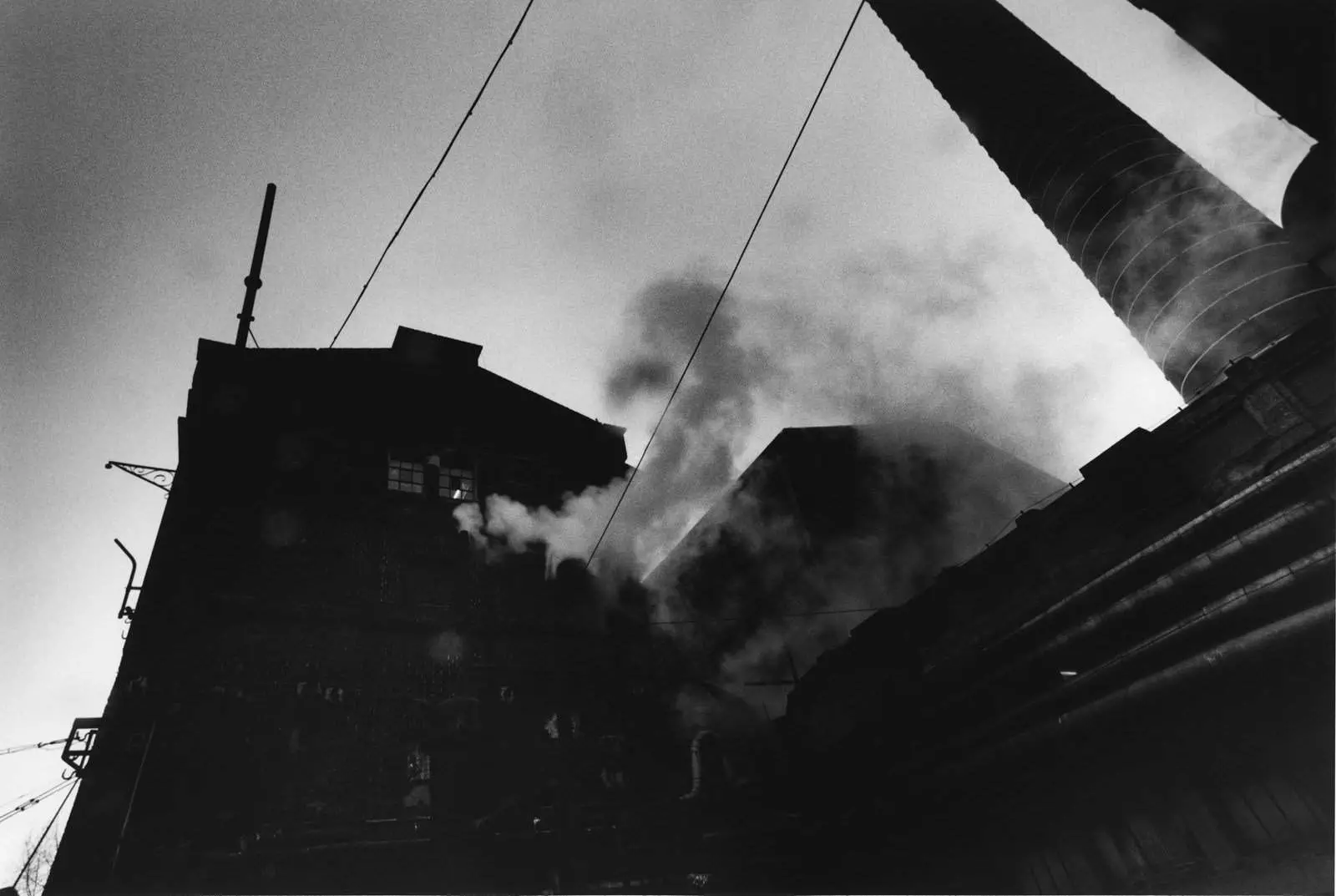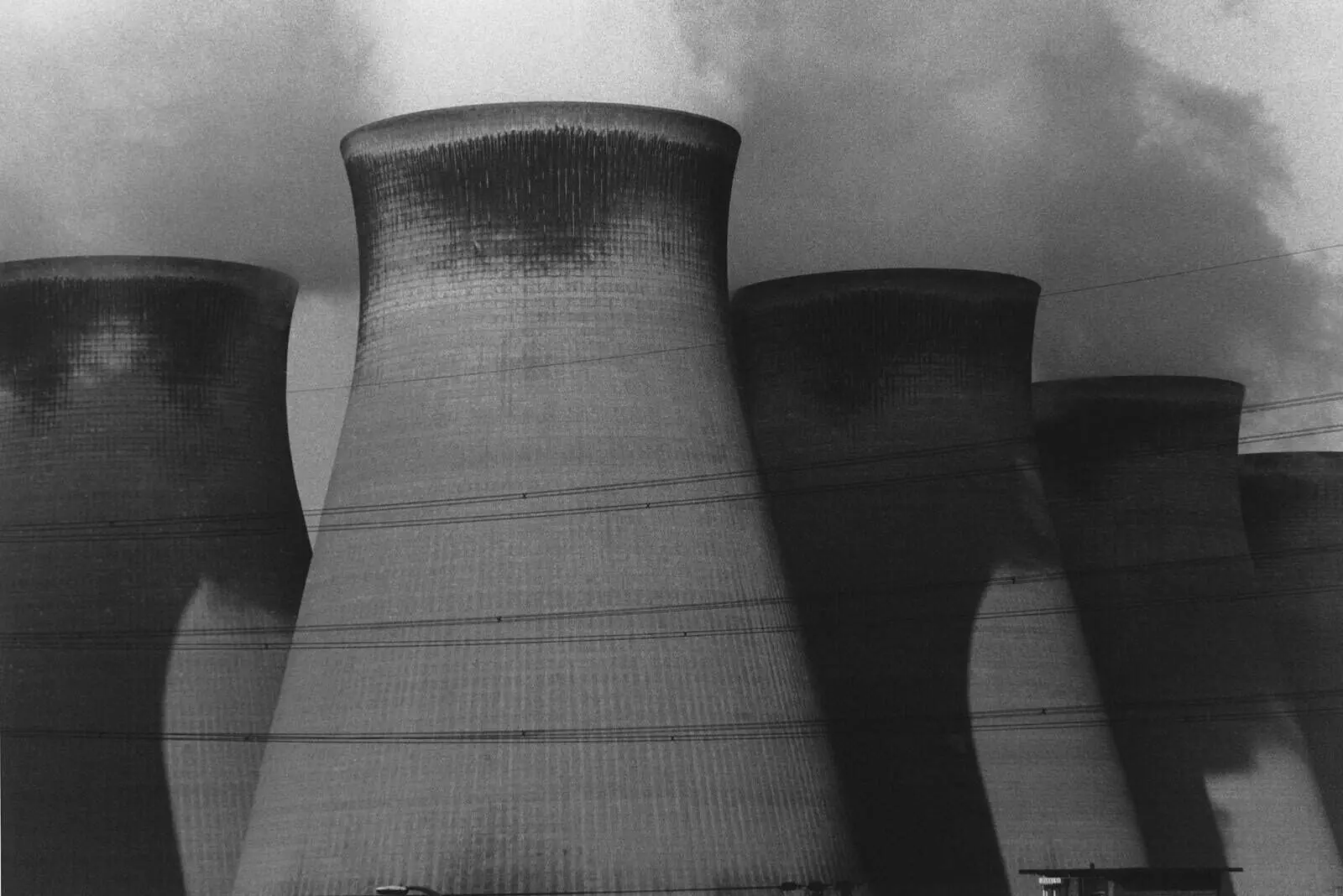
In the early nineties, artist, composer and label-boss Lawrence English saved up to buy a combined TV/VCR unit. Armed with the Psychotropic Encyclopaedia and the Something Weird video catalogue, he immersed himself in cinematic possibilities: a formative encounter with David Lynch’s dark surrealist first feature Eraserhead quickly followed. Wearing headphones so as not to wake anyone else in the house, the Brisbane teenager was seduced. “It was a real revelation for me,” says English today. “I realised something that has lingered with me all this time. Eraserhead was the first film where I realised the power of sound to expand the frame.”
As one half of HEXA, English will perform The Factory Photographs, with his collaborative partner, Xiu Xiu mainman Jamie Stewart, later this month at the Howard Assembly Room in Leeds. Billed as “an auditory response” to photographs of abandoned factories and industrial units the filmmaker has been making since the eighties, the cycle was originally commissioned by the Brisbane Museum of Modern Art to mark David Lynch – Between Two Worlds, a major retrospective of Lynch’s works across painting, sculpture, installation and photography in 2015.
In assembling the soundscape for The Factory Photographs, English has been able to channel the memory of those late night viewings: “The shots of (Eraserhead) are for the most part quite tight, and bound to claustrophobic rooms and the like,” he says. “The sound by contrast is limitlessly deep. It extends the frame far away, calling in all those unusual industrial sound worlds that linger ‘outside’ of the film itself. The sound opens up that world and makes the whole film so incredibly rich.”

“Every work ‘talks’ to you,” Lynch has said about his art, “and if you listen to it, it will take you places you never dreamed of.” The director has been seeking out and photographing abandoned factories since filming his second feature, The Elephant Man, although he has a deeply held fascination with the decaying, melancholy grandeur of industrial landscapes – both real and imagined – lingering from childhood. His maternal grandparents lived in New York, and Lynch recalls vividly as a boy seeing chimney stacks belching smoke and fire; both would become emblematic of his visual style. “I hate slick and pretty things,” he has said, “which is why I like things like cuts and bruises – they’re like little flowers.”
Lynch’s images of decaying, forgotten factories revel in their brutalised otherness, says English. “What (he) has captured is the critical pivot away from an industrial economy and effectively the dying breath of the industrial age.” The photographs, “especially when examined chronologically” with their starkly lit interiors, their jagged planes, their rusting skeletal forms, “reflect on these final moments of a way of being, a way of creation, a way of life to so many people and towns across the western world.” The photographs rubbish any suggestion of sustained growth, of better lives. They are “a broken promise … a beautiful obituary for a time that has passed.” Lynch’s explanation is characteristically prosaic: “I love industry. Pipes. I love fluid and smoke. I love man-made things. I like to see people hard at work, and I like to see sludge and man-made waste”
The director’s assessment of his work may be reductive, but it effectively freed HEXA to chart new and unexpected trajectories. “Jamie and I spoke at length about how it was the sound should approach the photographs,” says English. “The last thing we were interested in was a literal reading of them.” The pair was struck by the sense of a ghost memory that seeped from the walls, subsuming the interiors of Lynch’s photographs. “It is as if the sound of those spaces lingers and haunts the images themselves,” English says. “They somehow maintain, or in the very least suggest, a sense of the acoustic properties of the spaces.” He and Stewart were increasingly consumed by how best to bottle and express this sensation through the project. “We discussed the sonic aesthetics and questions of noise and physicality as it related to the idea of the human body embedded in the world of machines.”
Talking to the website Mess+Noise in 2014, English described the tensions of the creative process as “a kind of struggle between almost nothing and almost everything.” There are echoes of this paradox in The Factory Photographs: “I’ve done a lot of field recordings in contemporary factories and I am ceaselessly amazed by how they dwarf the capacities of the human body and human perception,” he explains. “Some of the loudest and most approachable sounds I have ever encountered were in factories.” Admitting to feeling “flipped out over industry and factories – sounds as well as images,” Lynch instead prefers not to mine his images for deeper meaning: “It’s not an intellectual thing. It’s just … there’s something about a factory that’s like a beautiful garden.” (This tendency to underplay is textbook Lynch. He told English, when the two met to formalise the project, that he was happy Eraserhead had made such an impression on him. “Lovely fellow,” remembers English.)
Lynch may resist the political, but English does not: “I believe strongly that music does not exist in isolation, but is constantly in a feedback loop with broader social, political, cultural and philosophical concerns,” he says. “This project clearly concerns itself with how it is we appreciate the changing position of these spaces into the future. In the current political context in North America for example, the factory is a prime location of political focus and leverage. The idea that the factories can be somehow revived, turned from rust into an economic proposition, is a powerful expression of political ideology that manifests itself through a revival of times now expired.”
Just how expired is evident in a story Lynch recounts of a disastrous expedition to the North of England in the late 1980s with cinematographer Freddie Francis. “Oh, it was a depressing trip,” he told the Daily Telegraph’s Gaby Wood. “I heard all my life that real industry — you know, fire and smoke, the real deal — was in England, so we went up, and it was exactly at a time when they said they were tearing down one giant smokestack a week. A big change was happening, and there was nothing left.”

Lynch’s images “remind us that nothing is forever,” says English. “I’d argue that what these photos represent is a revaluation from the economic – in terms of the factories capacity to produce wealth in the mid-twentieth century – to the aesthetic – in terms of their capacity to move us and affect us today. When we presented the piece at the Gallery Of Modern Art, people were struck by the weight of the sound. It laces very strongly into the images and they orbit around each other in a most special way.”
Preparations for HEXA’s upcoming performance of Factory Photographs at the Howard Assembly Room (part of an extensive European tour) are now firmly in place. English is not sitting back, however. He is already looking towards the future: HEXA is at work on a new collaborative project which is described as ‘exciting’; both he and Stewart release solo albums in February. “The new Xiu Xiu record, Forget, is a masterwork in my opinion,” adds English.
Will he be watching the return of Twin Peaks when it airs in May? “Without a doubt!” he says. Perhaps he will even watch it on that original combination TV/VCR unit – for old time’s sake.
Hexa – David Lynch’s The Factory Photographs is on Friday 17th February 2017 at 19.45 at the Howard Assembly Room in Leeds. For more information and tickets, click here.
Follow Neil Mudd | @ANMudd